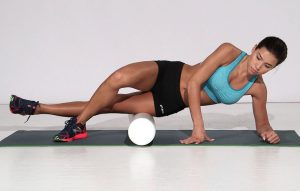Recently many people have been asking me the same question, ‘How do you relieve sore muscles post exercise’? Follow these simple steps and you can’t go far wrong. Try them all and identify which method gives you most relief.
What is DOMS (Delayed Onset Muscle Soreness)
When you exercise intensely, you can cause micro-tears in your muscle tissue, which leads to DOMS. The most common symptoms of DOMS include slight swelling, stiffness, and reduced range of motion in the affected joints, and increased tenderness and reduced strength in the affected muscles. It typically occurs 24-72 hours post exercise. DOMS may also be brought on by unfamiliarity with an exercise. Whether you’re a beginner, returnee, regular exerciser or professional athlete you will experience muscular fatigue at some point so don’t be alarmed when you do.
A common misconception
Is that sore muscles are a sign of an excellent workout and your body is making positive changes. However, the truth is that sore muscles and workout quality don’t go hand in hand. It usually just means that you pushed yourself too hard or that you’re doing new exercises.
How to reduce DOMS?
Take things back to basics. Start a progressive training program at a low intensity before progressing. Certainly, the best approach if your starting your exercise journey.
Stretch
When you exercise you contract your muscles, and the muscle fibres get shorter. Lengthening them after a workout promotes mobility, and can lead to a more thorough recovery. Be sure to hold each stretch for 20-30 seconds.
Foam roll
Using a foam roller to massage sore muscles between or after a workout can significantly reduce DOMS, ease muscle soreness and mobility. Give each major muscle group at least five rolls and spend extra time on sore spots. Be warned, it will feel uncomfortable.
Eat
Make sure to get enough macro-nutrients; healthy proteins, carbohydrates, and fats. These all which play important roles in repairing and maintaining muscles. Beyond that, consider a high protein meal/snack or shake a couple hours post exercise as this is when protein synthesis (muscle repair) increases.
Inflammation plays a significant part in DOMS. To help reduce this inflammation, consume foods that are rich in omega-3 fatty acids—such as salmon, free-range meat, flax, avocado, and walnuts. Th natural anti-inflammatory proprieties of these foods can help muscle soreness after overexertion.
Heat
Heat increases circulation, especially focused heat like a jacuzzi, making it a powerful recovery tool between workouts—emphasis on between workouts. Immediately after a training session, such heat can exacerbate inflammation, and the jets can pound your already damaged muscles, resulting in more muscle soreness instead of less.
Keep moving
Even though may not want to, you must! Try a gentle yoga class or go for a walk, these kind of activities are known as ‘active recovery’. If you find yourself unable to hold a conversation while you do it, you’re over-exerting yourself, slow down!
Ice it
Immediately after a tough workout, ice your muscles as this can reduce inflammation. It’s a simple and safe option that many athletes swear by. Unless you ice so long that you give yourself frostbite, there’s really no danger.
I hope this answers your questions & your able to put these steps into practice, giving those tired muscles some relief as well as speeding up recovery.
Clare
